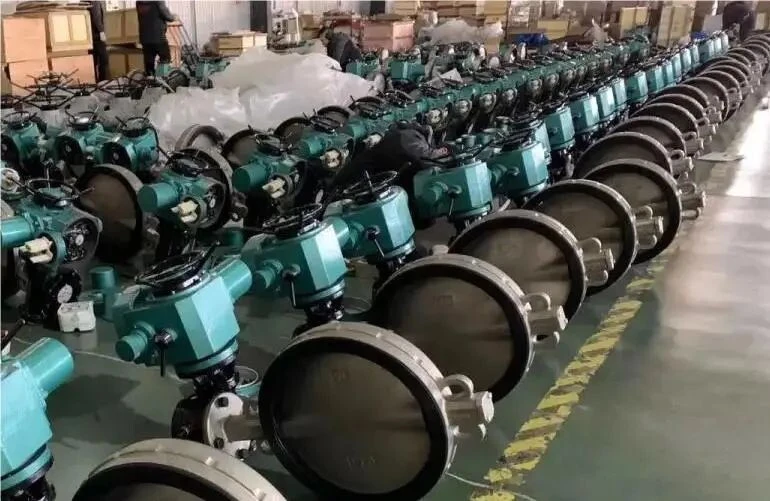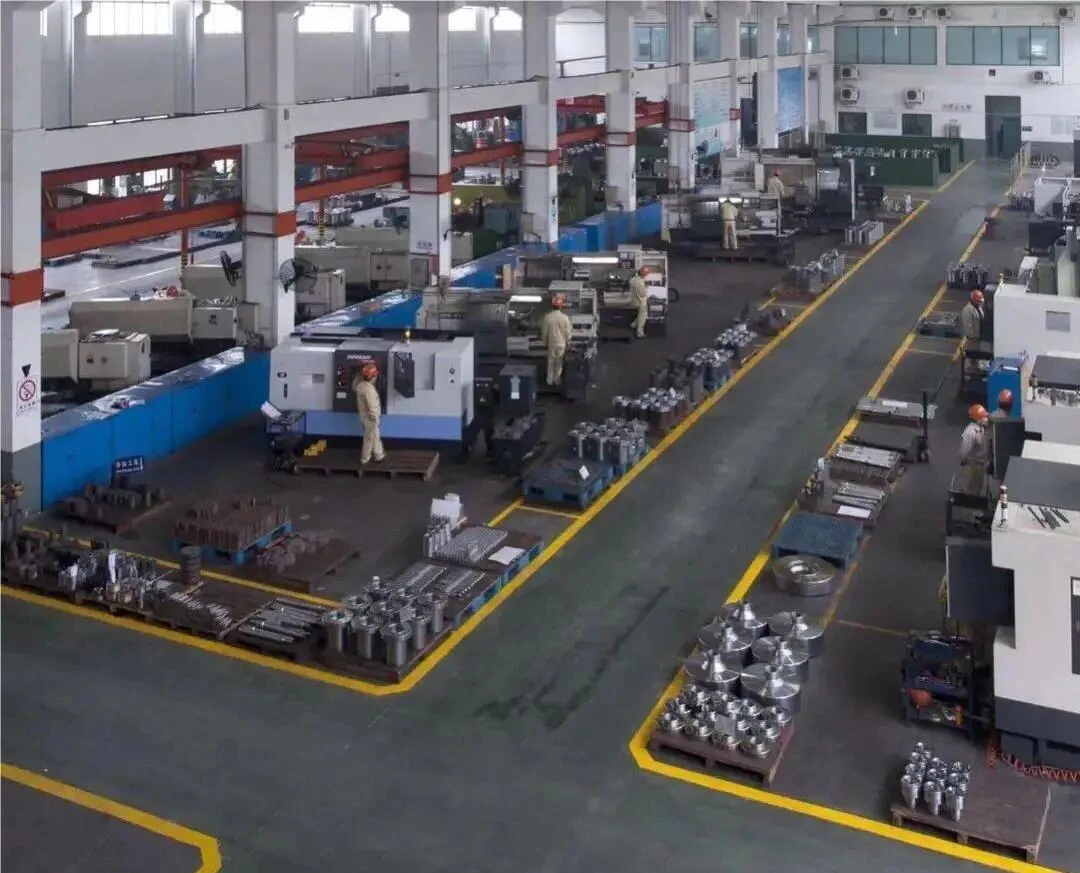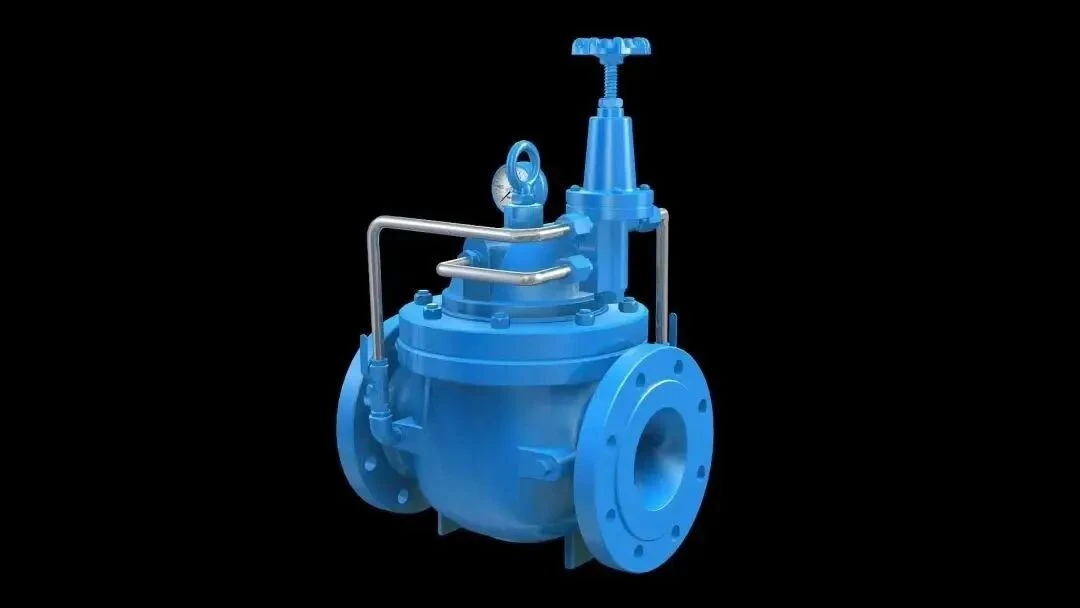10 Common Problems Encountered in Valve Applications
1. Why does a double-seat valve tend to oscillate at low openings?

For a single-core valve, stability is good when the medium is in a flow-open mode, but poor when it's in a flow-closed mode. A double-seat valve has two cores: the lower core is in a flow-closed state while the upper one is in a flow-open state. Consequently, at low openings, the flow-closed core is prone to causing valve oscillations, rendering double-seat valves unsuitable for low-opening operations.
2. Why shouldn't double-seal valves be used as shut-off valves?
The advantage of a double-seat valve core lies in its force-balanced structure, allowing for high-pressure differentials. However, its prominent drawback is that both sealing surfaces cannot make good contact simultaneously, resulting in significant leakage. Even with many improvements (such as double-sealed sleeve valves), using them forcibly as shut-off valves yields poor results.
3. Why do straight-stroke control valves have poor anti-blocking performance compared to rotary-stroke valves?
The valve core of a straight-stroke valve is perpendicular to the flow, while the medium flows horizontally in and out. This necessitates multiple turns and bends in the valve cavity, making the flow path quite complex (shaped like an inverted "S").
4. Why are straight-stroke control valve stems thinner?
This involves a simple mechanical principle: sliding friction is greater than rolling friction. In straight-stroke valves, when the stem moves up and down, a slight tightening of the packing causes it to grip tightly, resulting in significant backlash. Therefore, the stem is designed to be very thin, often using low-friction PTFE packing to reduce backlash. However, this leads to stem fragility and reduced packing life. The best solution is to use rotary valve stems, such as angular-stroke control valves, which have stems 2 to 3 times thicker than straight-stroke valve stems and use long-life graphite packing, resulting in lower friction torque and backlash.
5. Why do rotary-stroke valves have a higher shut-off pressure differential?

Rotary-stroke valves have a large shut-off pressure differential because the resultant force on the rotation axis from the medium acting on the valve core or valve plate is very small, allowing them to withstand higher pressure differentials.
6. Why do rubber-lined butterfly valves and fluorine-lined diaphragm valves have short lifespans when used with desalinated water media?
Desalinated water media contain low concentrations of acids or alkalis, which corrode rubber. Rubber corrosion manifests as swelling, aging, and reduced strength, leading to poor performance of rubber-lined butterfly valves and diaphragm valves. The essential issue is the poor corrosion resistance of rubber. Although rubber-lined diaphragm valves have been improved to fluorine-lined ones with better corrosion resistance, the diaphragm of fluorine-lined valves cannot withstand folding, resulting in mechanical damage and shorter valve life. The best solution now is to use special water treatment ball valves, which can last 5 to 8 years.
7. Why should shut-off valves preferably use hard seals?
Shut-off valves require minimal leakage, and while soft-seal valves have the lowest leakage, their wear resistance and reliability are poor. From the perspective of both low leakage and reliable sealing, soft-seal shut-off valves are inferior to hard-seal shut-off valves. For example, fully functional ultra-lightweight control valves with wear-resistant alloy protection have high reliability, with a leakage rate of 10-7, meeting shut-off valve requirements.
8. Why haven't sleeve valves replaced single and double-seat valves as hoped?

Sleeve valves, which emerged in the 1960s and saw widespread use in the 1970s domestically and internationally, had a significant share in petrochemical plants introduced in the 1980s. At that time, many believed that sleeve valves could replace single and double-seat valves and become second-generation products. However, this has not been the case. Single-seat valves, double-seat valves, and sleeve valves are all used equally. This is because while sleeve valves have improved flow control, stability, and maintenance compared to single-seat valves, they are similar to single and double-seat valves in terms of weight, anti-blocking, and leakage. Therefore, they cannot replace single and double-seat valves and are used alongside them.
9. Why is selection more critical than calculation?
Compared to calculations, valve selection is much more complex and important. Calculations involve simple formulae and depend more on the accuracy of given process parameters. (For more details, please visit the official website of BALTIC VALVE CO., LTD)
10. Will piston actuators become increasingly prevalent in pneumatic valves?
For pneumatic valves, piston actuators can fully utilize air pressure, resulting in smaller and more powerful actuators compared to diaphragm-type ones. Additionally, the O-rings in pistons are more reliable than diaphragms. Therefore, their usage is expected to increase over time.

For a single-core valve, stability is good when the medium is in a flow-open mode, but poor when it's in a flow-closed mode. A double-seat valve has two cores: the lower core is in a flow-closed state while the upper one is in a flow-open state. Consequently, at low openings, the flow-closed core is prone to causing valve oscillations, rendering double-seat valves unsuitable for low-opening operations.
2. Why shouldn't double-seal valves be used as shut-off valves?
The advantage of a double-seat valve core lies in its force-balanced structure, allowing for high-pressure differentials. However, its prominent drawback is that both sealing surfaces cannot make good contact simultaneously, resulting in significant leakage. Even with many improvements (such as double-sealed sleeve valves), using them forcibly as shut-off valves yields poor results.
3. Why do straight-stroke control valves have poor anti-blocking performance compared to rotary-stroke valves?
The valve core of a straight-stroke valve is perpendicular to the flow, while the medium flows horizontally in and out. This necessitates multiple turns and bends in the valve cavity, making the flow path quite complex (shaped like an inverted "S").
4. Why are straight-stroke control valve stems thinner?
This involves a simple mechanical principle: sliding friction is greater than rolling friction. In straight-stroke valves, when the stem moves up and down, a slight tightening of the packing causes it to grip tightly, resulting in significant backlash. Therefore, the stem is designed to be very thin, often using low-friction PTFE packing to reduce backlash. However, this leads to stem fragility and reduced packing life. The best solution is to use rotary valve stems, such as angular-stroke control valves, which have stems 2 to 3 times thicker than straight-stroke valve stems and use long-life graphite packing, resulting in lower friction torque and backlash.
5. Why do rotary-stroke valves have a higher shut-off pressure differential?

Rotary-stroke valves have a large shut-off pressure differential because the resultant force on the rotation axis from the medium acting on the valve core or valve plate is very small, allowing them to withstand higher pressure differentials.
6. Why do rubber-lined butterfly valves and fluorine-lined diaphragm valves have short lifespans when used with desalinated water media?
Desalinated water media contain low concentrations of acids or alkalis, which corrode rubber. Rubber corrosion manifests as swelling, aging, and reduced strength, leading to poor performance of rubber-lined butterfly valves and diaphragm valves. The essential issue is the poor corrosion resistance of rubber. Although rubber-lined diaphragm valves have been improved to fluorine-lined ones with better corrosion resistance, the diaphragm of fluorine-lined valves cannot withstand folding, resulting in mechanical damage and shorter valve life. The best solution now is to use special water treatment ball valves, which can last 5 to 8 years.
7. Why should shut-off valves preferably use hard seals?
Shut-off valves require minimal leakage, and while soft-seal valves have the lowest leakage, their wear resistance and reliability are poor. From the perspective of both low leakage and reliable sealing, soft-seal shut-off valves are inferior to hard-seal shut-off valves. For example, fully functional ultra-lightweight control valves with wear-resistant alloy protection have high reliability, with a leakage rate of 10-7, meeting shut-off valve requirements.
8. Why haven't sleeve valves replaced single and double-seat valves as hoped?

Sleeve valves, which emerged in the 1960s and saw widespread use in the 1970s domestically and internationally, had a significant share in petrochemical plants introduced in the 1980s. At that time, many believed that sleeve valves could replace single and double-seat valves and become second-generation products. However, this has not been the case. Single-seat valves, double-seat valves, and sleeve valves are all used equally. This is because while sleeve valves have improved flow control, stability, and maintenance compared to single-seat valves, they are similar to single and double-seat valves in terms of weight, anti-blocking, and leakage. Therefore, they cannot replace single and double-seat valves and are used alongside them.
9. Why is selection more critical than calculation?
Compared to calculations, valve selection is much more complex and important. Calculations involve simple formulae and depend more on the accuracy of given process parameters. (For more details, please visit the official website of BALTIC VALVE CO., LTD)
10. Will piston actuators become increasingly prevalent in pneumatic valves?
For pneumatic valves, piston actuators can fully utilize air pressure, resulting in smaller and more powerful actuators compared to diaphragm-type ones. Additionally, the O-rings in pistons are more reliable than diaphragms. Therefore, their usage is expected to increase over time.




